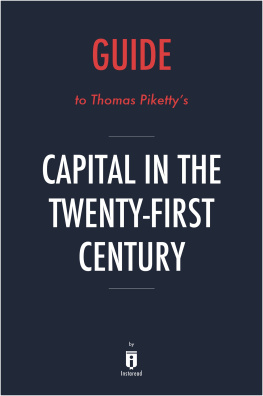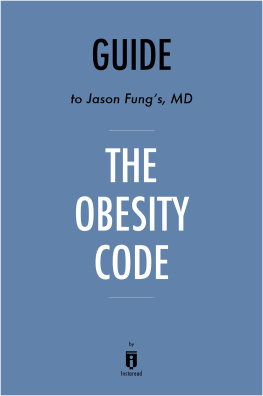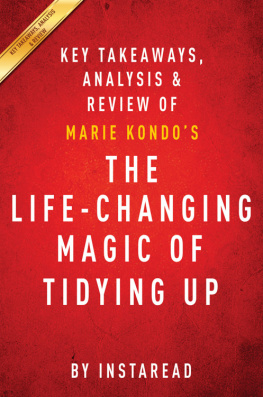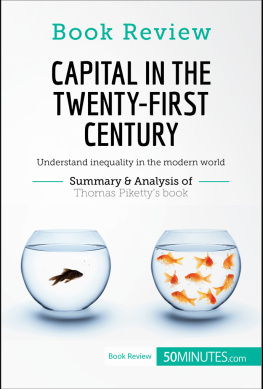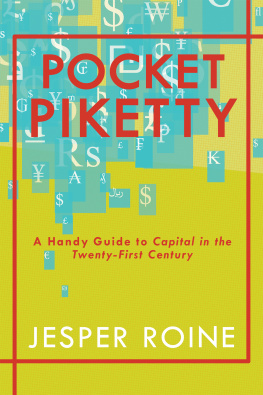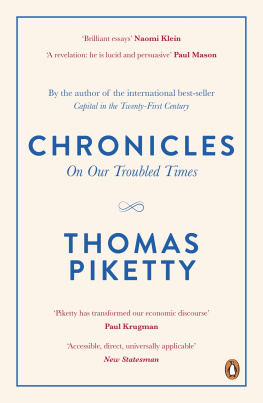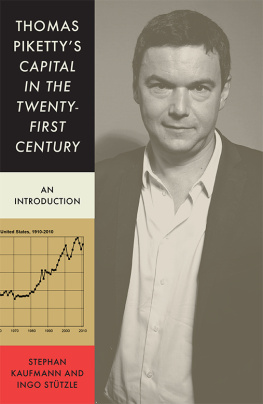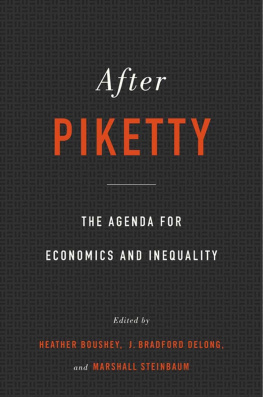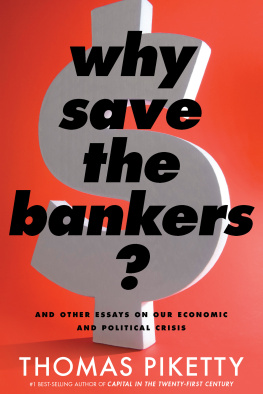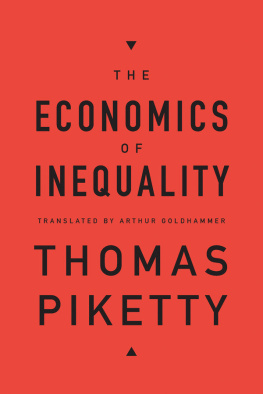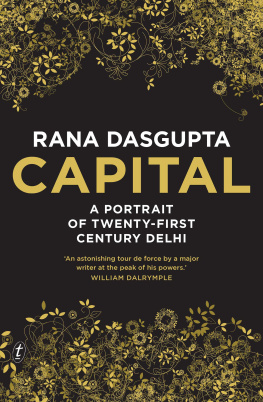Guide to
Thomas Pikettys
Capital in the Twenty-First Century
by
Instaread
Please Note
This is a companion to the original book.
Copyright 2016 by Instaread. All rights reserved worldwide. No part of this publication may be reproduced or transmitted in any form without the prior written consent of the publisher.
Limit of Liability/Disclaimer of Warranty: The publisher and author make no representations or warranties with respect to the accuracy or completeness of these contents and disclaim all warranties such as warranties of fitness for a particular purpose. The author or publisher is not liable for any damages whatsoever. The fact that an individual or organization is referred to in this document as a citation or source of information does not imply that the author or publisher endorses the information that the individual or organization provided. This concise companion is unofficial and is not authorized, approved, licensed, or endorsed by the original books author or publisher.
Table of Contents
Overview
Thomas Pikettys Capital in the Twenty-First Century is a study of inequity, both historically and in the present. The book describes how the concentration of wealth has changed over time. Its central thesis is that return on capital is greater than growth over time, which means that capital and inequality inevitably increase. The book also considers the ways governments might address the increasing concentration of wealth in the future.
Many economists have argued that increasing worker productivity in the modern era will inevitably result in reduced inequality. The historical record suggests that this is untrue. For most of history, there has been a huge gap between the rich and poor with no real middle class.
That changed in developed countries during the twentieth century for a number of reasons. First, two world wars caused massive shocks to the status quo and resulted in severe losses to many holders of capital. Second, to finance the wars, many governments quickly passed new progressive income taxes. These taxes changed the structure of wealth in society and created the possibility for a middle class of small capital holders.
Over time, in societies without strong growth, capital tends to concentrate and accumulate. This can be expressed as r>g. In this expression, r stands for the average rate of return on capital, and g stands for the rate of growth of the economy. Over time, return on capital tends to be higher than the growth of the economy. Thus capital accumulates faster than the economy can grow, which means capitalists become more and more wealthy in comparison to everyone else.
High growth rates during the nineteenth and twentieth centuries thus helped to create a more equal distribution of wealth. However, in the twenty-first century, growth has slowed. The world again is seeing high levels of inequality similar to those in the eighteenth and early nineteenth centuries. This inequality is likely to increase unless it is addressed.
The best way to halt or reverse rising inequality is through increased taxation. Especially in Britain and the United States, where top salaries, particularly for CEOs, have increased rapidly, a confiscatory tax on very high incomes would help to rein in excessive salary divergence.
A global tax on capital is the central tool governments need to control and manage inequality. Such a tax would first provide researchers and the public with essential records about who owns what capital worldwide. Policy decisions could then be much better informed. A global tax would also prevent individuals from relocating assets in order to avoid national tax authorities. Finally, such a tax would help fund governments, providing the wherewithal to create safety nets, stabilize employment, and preserve the middle class while helping the poor.
Capital in the Twenty-First Century was published in 2013 in French. The English translation in 2014 became a #1 New York Times bestseller and an international sensation. Pikettys argument prompted an intense and ongoing discussion of the nature and danger of inequality.
Important People
Thomas Piketty is a French economist who studies income and wealth inequality.
Arthur Goldhammer is senior affiliate at the Center for European Studies at Harvard and a renowned translator of French. He translated Capital in the Twenty-First Century into English.
Karl Marx (1818-1883) was a Prussian economist who advocated for Communist revolution. His most famous works include The Communist Manifesto (1848) and Capital (1867).
Simon Kuznets (1901-1985) was an American economist known for his work on economic growth and for his pioneering use of statistics and quantitative sources.
Jane Austen (1775-1817) was a British novelist.
Honor de Balzac (1799-1850) was a French novelist.
Thomas Malthus (1766-1834) was an English economist who believed that unchecked population growth was dangerous and would lead inevitably to famine and disease.
David Ricardo (1772-1823) was a British economist known for his work on the theory of land rents.
Franco Modigliani (1918-2003) was a Nobel-prize winning Italian economist. He developed the life-cycle hypothesis, which theorizes that people save to ensure a stable level of consumption over their lifetimes.
Key Insights
- Discussions of inequality are innately political. Economists who write about inequality are always influenced by their own political prejudices and preconceptions.
- The capital/income ratio is an important indicator of inequality in a society.
- When growth is low, the capital/income ratio is high, and societies tend to become more unequal.
- There is no guarantee that inequality will lessen in the modern era. Rather, inequality decreased in the twentieth century because of specific events, such as the two World Wars, and specific policies, such as the progressive income tax.
- The vast majority of wealth in the twenty-first century is private wealth. Governments can either borrow or tax private wealth. The wealthy much prefer government borrowing, but this does not necessarily benefit governments or others in society.
- Despite increased life expectancy, inheritance continues to be of major importance in perpetuating wealth.
- Inequality in the twenty-first century is different from that of earlier eras in that it is partially fueled by massive income divergence. A confiscatory tax on very high incomes could help to address this problem.
- A global tax on capital is needed to control inequality and prevent injustice and instability.
Analysis
Key Insight 1
Discussions of inequality are innately political. Economists who write about inequality are always influenced by their own political prejudices and preconceptions.
Analysis
Some economists present economics as a science that objectively describes financial conditions and provides technical guides to optimal policies. The truth, however, is that economic decisions are political ones, and economic theories have always been influenced by the political and social position of economists. For example, economists in modern Western societies in the twenty-first century tend to occupy respected positions of power and comfort. As a result, many such economists see the future in optimistic terms and are not overly worried about growing inequality.
One of the most glaring examples of the way in which politics and economics are intertwined is in the history of supply-side economics. Supply-side economics argues that lowering tax rates causes people to work harder and that this stimulates growth. Supply-side economics also holds that cutting taxes on the wealthy is particularly effective because tax cuts lead the wealthy to spend and invest more, causing a trickle-down effect throughout the economy. [1]
Next page
